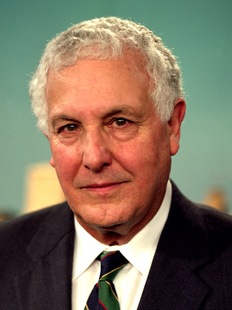
KQED recently announced the launch of a new multiplatform program called "KQED Newsroom," which starting Oct. 18 will replace "This Week in Northern California" on Friday nights. The title is a nod to the station's groundbreaking 1968 program, which was the first nightly news series on public television and informed the launch of the national "The Macneil/Lehrer Report," which premiered in 1975.
More than 30 years ago, Spencer Michels, the longtime San Francisco correspondent for MacNeil/Lehrer and its successor show, "PBS NewsHour," worked at KQED on some early shows in the "Newsroom" mode. Here, he reflects on those years.
Sitting in my office at KQED, I was recently told, for the third time in my career, that I will soon no longer be employed doing what I love to do: researching and reporting news stories on public television. The "PBS NewsHour" decided it could no longer support offices in San Francisco and Denver, and therefore would close them down and lay off several producers, a cameraman, and me -- a national correspondent who has been producing stories for "NewsHour" since 1983.
No one likes to get laid off, but the fact is, it's nothing new to me. The first time I got canned was when I worked on a short-lived 1979 KQED show called “Evening Edition,” one of the shows the station launched after the demise of its landmark "Newsroom" show. "Evening Edition," hosted by Belva Davis, featured Rollin Post and me and a few other reporters taking an in-depth look at Bay Area and California news.
But it died an ignominious death because too few people watched. The era of "Newsroom"-type programming, it seemed, had ended. The Vietnam War and the anti-war protests had faded, and so had interest in an alternative current affairs program. What the public seemed to want were news choppers and fast-paced shows with flashy personalities in the anchor chair, spiced with lots of crime. We weren’t flashy, though we did use a balloon furnished by Yoplait Yogurt to try to compete with the commercial stations’ whirlybirds. The balloon, however, crashed, with me in it, along with the show.